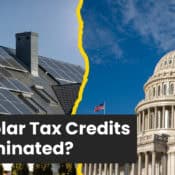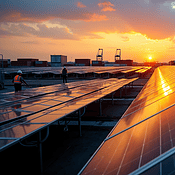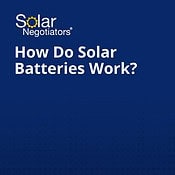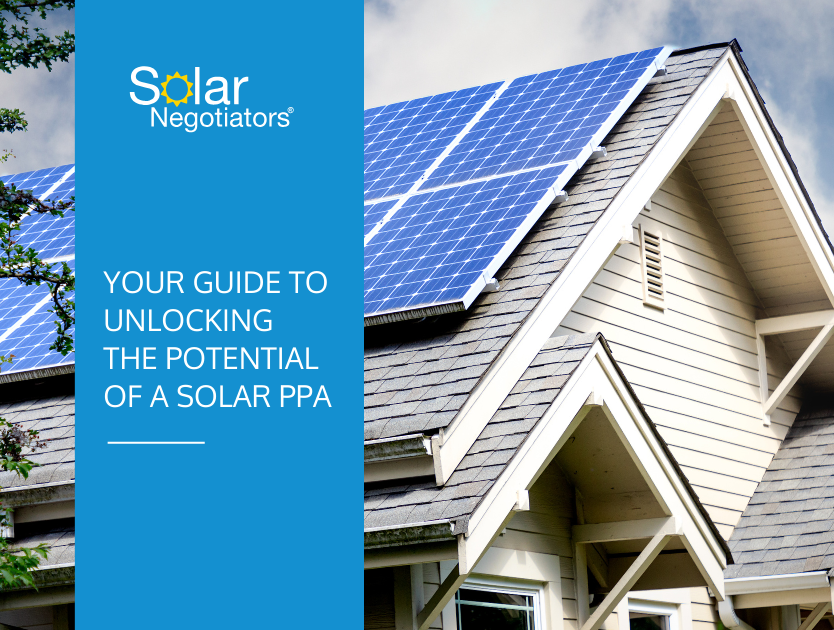
Your Guide To Unlocking the Potential of Solar PPA (Power Purchase Agreement)
Many homeowners mistakenly think that going solar requires a large out-of-pocket cost. There are many different financing options available for homeowners looking to purchase solar panels. For those who want to go with $0-down financing can do so in the form of a Solar Power Purchase Agreement, or also known as a solar PPA. Other methods of financing are loans and leases. Solar Power Purchase Agreements (PPAs) have emerged as a game-changing avenue for individuals and businesses to embrace cleaner, more affordable power without having to pay for a large bill upfront.
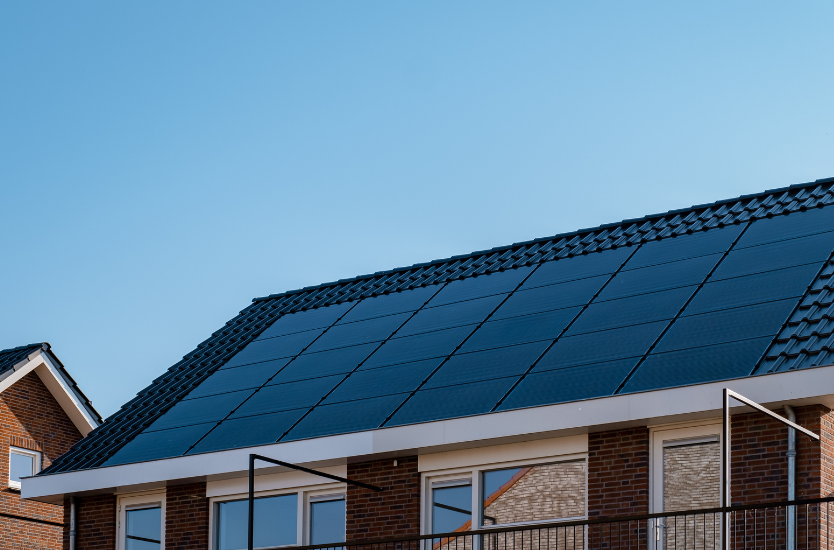
What Is A Solar PPA?
A Solar Power Purchase Agreement (PPA) is a financial arrangement that allows homeowners to adopt solar energy without the upfront costs of purchasing and panel installation. This is similar to a lease option, where a third-party solar provider installs, owns, and maintains the solar panels on the property. In exchange for using the solar panels to generate electricity, the property owner agrees to purchase the energy produced by these panels at a predetermined rate, often lower than the local utility’s retail electricity rates.
How Does Solar PPA Work?
A solar PPA typically follows the same procedure as a traditional-financed installation, but instead of owning the electricity that’s generated, the homeowner has to buy the electricity from the solar provider listed in the contract agreement. This is usually outlined in the contract that specifies the rate per kilowatt (kWh) of energy. PPAs typically span around 15 to 25 years, with options to renew or purchase the system at the end of the contract.
Typically, the rates that you’d buy are often set at a rate that is slightly lower than the local utility’s retail electricity rates. This rate structure is designed to provide immediate cost savings to the property owner and make solar energy more appealing. You’ll experience immediate savings on your energy bills! It is recommended to review this as an option because the buying rate will vary between factors such as region, electricity rates, solar market conditions, and the terms of the PPA contract.
Benefits To Homeowners Under PPA
Cost Savings
Watch your monthly expenses shrink as your reliance on grid power decreases as your use of green power increases. Enjoy immediate savings on your energy bills due to the lower PPA rate compared to traditional utility rates.
Locked-In Rates
Shield yourself from the volatility of the energy market and enjoy peace of mind knowing that your rates won’t skyrocket. Do keep in mind that the cost of your solar lease or solar Power Purchase Agreement (PPA) payment will rise annually. The precise increment of this increase will be outlined within your solar contract. Generally, the escalations in pricing for solar leases and PPAs typically fall within the range of 3% to 5%.
No Upfront Investment
Solar PPAs eliminate the need for upfront costs associated with purchasing and installing solar panels and solar batteries which can be costly.
Worry-Free Maintenance Included
Let the solar provider do all the work! The solar provider takes care of maintenance and repairs, reducing the property owner’s responsibilities.
Is Solar PPA Worth It?
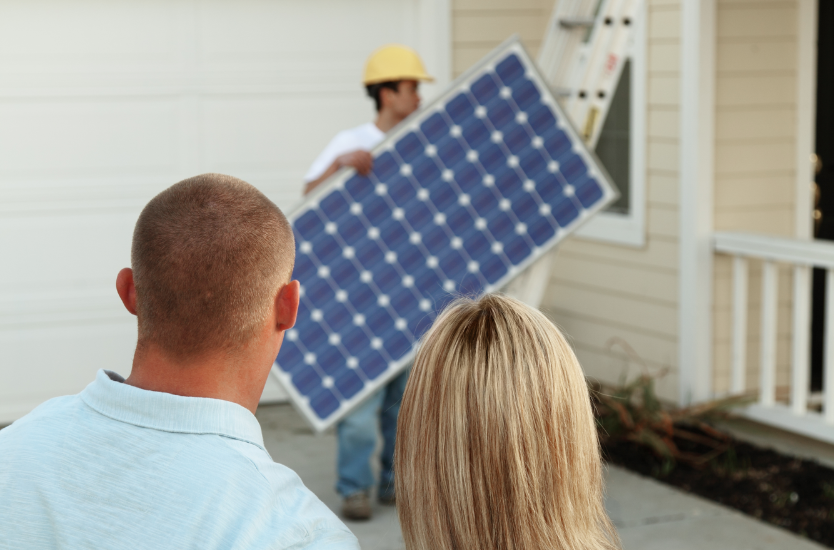
With solar PPA being a compelling option, it is important to understand the details and ensure it’s a good fit to your needs. Afterall, most homeowners interested in solar want to maximize savings or have a reliable power source in case things go away.
Here are key steps to guide you through the decision-making process:
1. Understand Your Energy Needs:
This will be your north star in weighing out the pros and cons of going solar. If you have adequate consumption of electricity every month, it may make sense for you to explore the different options available.
2. Research Solar PPAs:
Find out more details regarding a solar PPA, such as lower upfront costs, fixed energy rates, and maintenance provided by the solar provider. Familiarize yourself with the contractual terms, including the contract length and the rate you’ll pay for the generated energy.
3. Consider Other Financing Options:
While solar PPAs offer advantages, be sure to research other financing options, such as solar leases, solar loans, and outright purchase of solar systems. Each option comes with its benefits and considerations. For instance, purchasing a solar system outright might provide the highest long-term savings, while a PPA offers lower upfront costs.
4. Run The Numbers:
Compare the financial implications of each option. Calculate the potential savings and costs associated with different models over the long term. Consider factors like tax incentives, rebates, and any potential increases in energy rates.
5. Evaluate Your Solar Potential:
Determine what you’ll actually be generating in terms of power. Assess factors such as roof orientation, shading, and available space for solar panels. Solar Negotiators can help you assess whether your property is suitable for solar installation, how much you’ll be saving based on your previous 12 months usage of electricity, and help you understand the finer details.
How To Measure Energy Usage Under PPA?
Understanding how to measure energy usage under a Solar Power Purchase Agreement (PPA) is essential for both homeowners and solar providers. While homeowners benefit from lower energy costs through PPAs, accurate measurement ensures transparency and fairness in billing.
Solar contractors and customers will be able to determine the amount of power produced by your panels through the solar inverter, a separate piece of equipment used to monitor your energy data.
The electric bill from PPA will be based on the net energy consumption, and the difference between energy produced and energy used. It’s important that while you are under PPA billing, you can request access to metering data to ensure that the billing is accurate and aligns with the agreed upon terms.

What To Look For Before Choosing A PPA?
Contract Terms:
Review the significance of contract length, energy pricing, and the specifics of escalator clauses.
Home Suitability
Highlighting the importance of evaluating a property’s solar potential before entering a PPA.
Exit Strategies
Understand the options for terminating or transferring a solar PPA contract.
Solar Expertise
Work with an experienced solar installer who has done solar PPAs in the past. Get a free analysis on what a PPA could look like with Solar Negotiators!
Solar PPA vs Buying?
In most cases, it is always recommended to explore other options than a solar PPA. Solar Negotiators always recommend ownership to homeowners prior to California’s new net-energy-metering 3.0 policy changes. Today, the investment looks a little different to homeowners and the higher upfront costs can present a challenge for consumers looking to make the switch to solar. There can be more barriers such as higher credit scores, higher interest rates, and longer loan terms. All of these factors can make solar PPAs a more attractive choice for solar customers.
Different factors will play into each choice, but only one will be the best fit for you. Other options to consider are solar leases, solar loans, and outright purchase with cash. Each will have their own benefits listed here:
Solar Leases
Similar to PPAs, solar leases allow homeowners to benefit from solar energy without purchasing and owning the solar panels outright. Under a lease, you pay a fixed monthly fee for using the solar panels on your property. However, unlike a PPA, the focus is on leasing the equipment rather than purchasing the energy it produces.
Solar Loans
With a solar loan, you own the solar system from the start and repay the loan over a predetermined period. While loans may involve upfront costs, they offer the advantage of ownership and potential return on investment. Be sure to check what the interest rate will be for solar equipment and installation.
Cash Purchases
If you have the financial means, purchasing a solar system outright offers the highest long-term savings. You own the solar panels and the energy they produce, which can lead to reduced or eliminated energy bills over time. Purchasing in cash (meaning no financing) may lead to a better quote but is highly dependent on the installer.
Conclusion
Solar Negotiators hopes we have helped you weigh the pros and cons of solar PPA options. Ultimately, the decision between a solar PPA and other options hinges on your individual circumstances and priorities. By thoroughly researching, compiling your energy needs and estimated energy production, you’ll be equipped to choose the option that not only aligns with your financial goals but also contributes to a greener lifestyle and more cost savings.
Recent Posts
Latest Solar Tax Credit News: Bill Signed To Eliminate 30% Solar Tax Credit
Solar Tariffs – Are They Here To Stay?
Solar Backup Solutions: How Do Solar Batteries Work?
Reduce your reliance on the energy grid.
Get Solar In
Your Inbox

Refer friends and get paid in-app
The more referrals you bring in, the higher your earnings.
Earn $1,000 for each referral, and bonuses of up to $1,500 once you hit your 10th referral.


